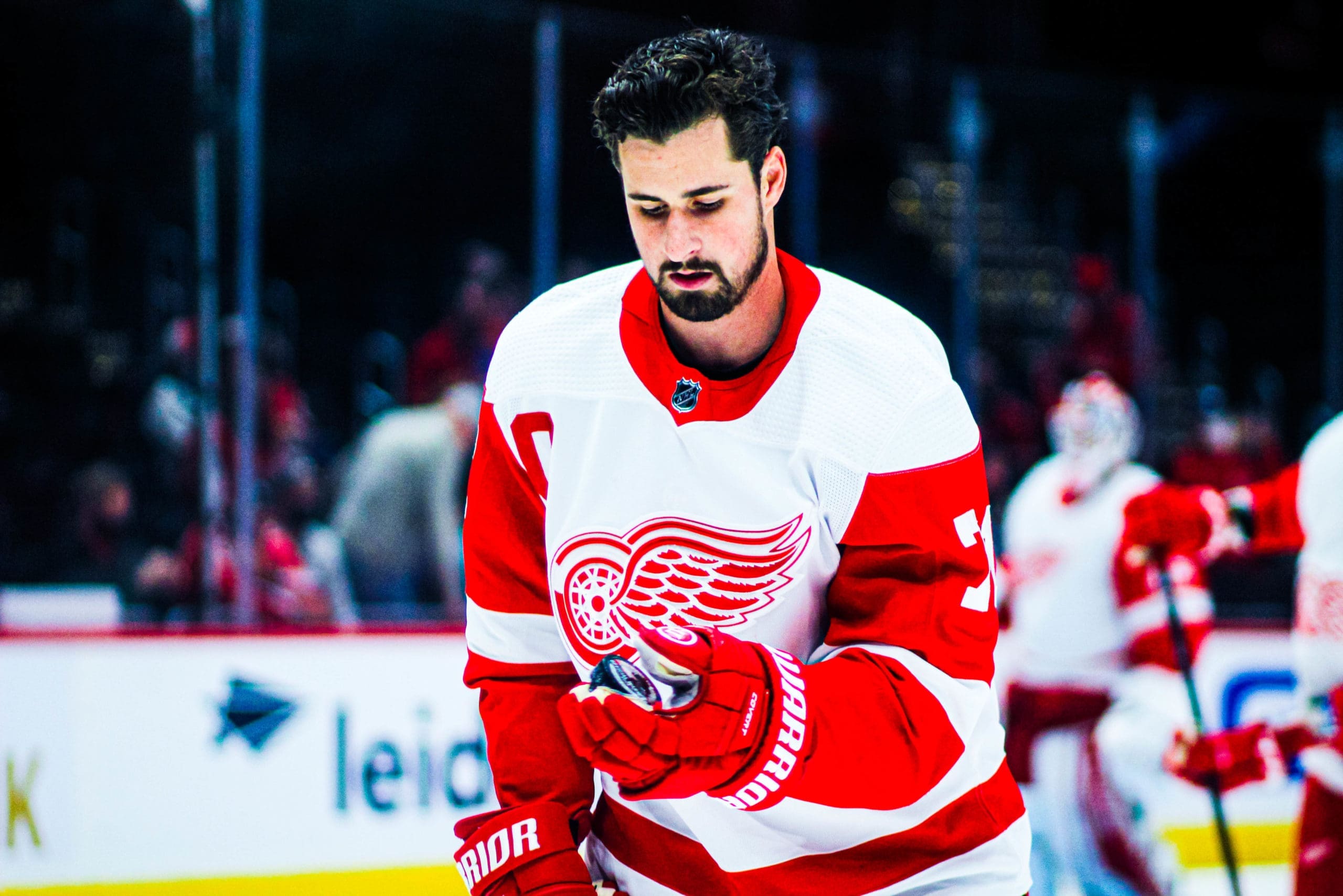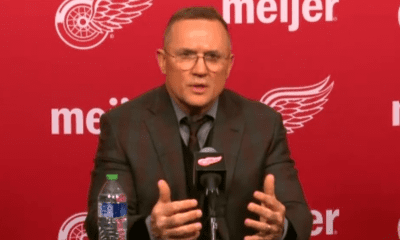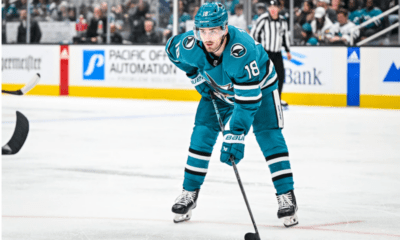Detroit Red Wings
Red Wings By the Numbers: A Decade’s Worth of Power Play Analysis Pt 3

In the final installment of Red Wings By the Numbers, DHN will take a look at the personnel and corresponding numbers for the power play. It’ll go back to the 2011-2012 season, the last that featured the great Nick Lidstrom. The report will be broken up into three parts:
- The Final Days of Contention: 2011-12 and 2012-13 (Saturday)
- The Last Gasp: 2013-14 to 2016-17 (Sunday)
- Rebuilding: 2017-18 to 2022 (Today)
2016-17 Red Wings
It was here that the playoff streak ended. It would also only get worse from here. The Red Wings hung around all season long but fell short of the playoffs, hastening the sell-off that would net players. Then general manager Ken Holland wasn’t completely sold the team was in full rebuild mode.
But the writing was on the wall.
The power play was a sore spot for Detroit, causing all sorts of issues. John Torchetti took over coaching the power play and well, the improvement wasn’t exactly what Detroit was seeking. Their efficiency nearly fell by four percent.
It was the season before a sell-off, too.
But the biggest blow to Detroit’s chances was the loss of Pavel Datsyuk to retirement. It was evident just how much the Detroit offense depended on him. Just ask Justin Abdelkader.
So Holland went out and signed Frans Nielsen, Steve Ott, and Thomas Vanek. He re-signed Darren Helm. But it wouldn’t be enough to cover the loss of Datsyuk.
Power play goals were few and far between–with Tomas Tatar, Thomas Vanek, Dylan Larkin, and Abdelkader each having five goals on the man advantage. But it trickled away from there in a season that was a shift for Detroit in a number of ways. Newcomer Nielsen had four, Green with three, and Zetterberg, Nyquist, and Helm with two apiece.
With the Joe Louis Arena closing and the Red Wings missing the playoffs, change was coming. But instead of opting for surgery, Detroit’s front office continued with a band-aid, trying to still rebuild on the fly.
The power play would be a microcosm of the issues Detroit was facing.
2017-18 Red Wings
The biggest takeaway from the season was Holland acquiring a first, second, and third round pick for Tatar. From there, this was the first definitive season where Detroit was no longer a playoff team. Captain Zetterberg would also play in his final season.
The power play, ironically enough, would improve. But Torchetti’s contract would not be renewed at the end of the season, sending Blashill to seek help for the bottom tier power play.
The names at the top of the scoresheet were younger, with Anthony Mantha (9) Tatar (8) and Martin Frk (5) leading the scoring. Abdelkader and Nielsen each potted four, the five accounting for 30 of Detroit’s 41 power play goals.
With youngsters like Athanasiou, Mantha, and Larkin rising, there was a glimmer of hope for the Red Wings, despite missing the playoffs by more points.
But the real transformative change Detroit would need came a season later.
A Glance at the Red Wings Power Play 2016-2022
| Season | PP% | NHL Rank | Change | PP Goals | PP Chances |
League Average
|
| 2016-17 | 15.08% | 27th | -3.72% | 38 | 252 | 245 |
| 2017-18 | 17.52% | 24th | 2.44% | 41 | 234 | 250 |
| 2018-19 | 18.06% | 19th | 0.54% | 39 | 216 | 239 |
| 2019-20 | 14.88% | 29th | -3.18% | 32 | 215 | 208 |
| 2020-21 | 11.41% | 30th | -3.47% | 17 | 149 | 162 |
| 2021-22 | 16.30% | 26th | 4.89% | 37 | 227 | 237 |
2018-19 Red Wings
The power play, along with the scoring from the new core, would improve, albeit is slightly. Larkin and Athanasiou would each score at least thirty goals while Mantha and Tyler Bertuzzi would be above the twenty plateau with 25, and 21 respectively. The young core, it appeared, was finally forming.
The power play, now in the hands of Dan Bylsma, who as any Red Wings fan of recent can tell you, would become the coach associated with the much maligned power play. But in the one year of improvement, it was right before the rebuild completely changed. The slight of improvement of efficiency, from 17.52% to 18.06%, would be the only time Detroit would see its power play out of the bottom third.
On April 19th, Steve Yzerman was named the general manager of the team and the winds of change were near. Yzerman would start by drafting Moritz Seider, a shock that would prove brilliant as seen recently. Seider would be one of many pieces to build around. But up until that point, Yzerman was focused on finally doing what was necessary: tearing the organization down to its foundation.
2019-20 Red Wings
It’s unfair to cast blame for the power play on the season. Not only would the Red Wings be one of the worst teams in the salary cap era, Yzerman would deal away some of the pieces that were once considered core. There was no band-aid. He was going right for the wound and finally dealing with it.
In almost every single category, the Red Wings fell. Hard. The power play saw just 32 goals, led by Manth and Robbi Fabbri (6 apiece) and Larkin (5). Those three players would account for over half of Detroit’s goals on the man advantage. Filip Zadina, Bertuzzi and Athanasiou would collect three apiece. Scoring was concentrated amongst a few.
Bylsma’s system though wouldn’t take the massive hit until the following season, when the Red Wings would suffer through a brutal power play. The season would end abruptly due to the COVID-19 pandemic. It would also, as such, be the worst season Detroit would endure during the rebuild.
2020-21 Red Wings
There aren’t enough words to properly convey how poorly the Red Wings power play performed. But there is this tweet:
Oh, to have been there when Dan Bylsma was told that Blashill was getting extended again.
— Greg Wyshynski (@wyshynski) May 18, 2021
Bylsma wore the collar for the abysmal power play, which at one point went 40 attempts without scoring a goal. Believe it or not, the Red Wings weren’t even the worst man advantage in the league. But it would be the worst efficiency of the decade at a paltry 11.41%. This would be the low mark for Detroit.
Perhaps the only saving grace was a shortened season that didn’t prolong the agony. Adam Erne led Red Wings scorers on the power play with three, tied with Zadina and Bertuzzi. Mantha would notch two before being traded to Washington. Of the 17 power play goals, the aforementioned four would account for 65% of the man advantage scoring.
It would also be Bylsma’s final season in Detroit. Blashill would get one more shot, and for his fourth power play coach in seven seasons, he’d select Alex Tanguay.
2021-22 Red Wings
Yes there was improvement, especially with personnel changing and draft picks Seider and Lucas Raymond showing top-end skill the Red Wings were hoping for. The power play had a nearly five percent jump, buoyed by more skill, quicker passes, and more movement. In short, it was the antithesis of the stay-in-your-place Bylsma offering.
What the power play did show is there were more skilled offerings and with those options, the goals increase. When Jakub Vrana returned, he added five goals to the man advantage. Bertuzzi, Larkin, and Fabbri each had six goals. Raymond put in five of his own. Zadina had four, Seider and Filip Hronek two, and finally, Taro Hirose with one.
There’s still room for improvement but pieces are there for building. Tanguay was retained for next season, showing that Yzerman believes a new voice and approach might help unlock things more.
But seven seasons of a struggling power play had a number of culprits, namely the key personnel either being traded or retiring.
For Detroit to improve, the power play must be one of the critical pieces for their improvement to take hold. Yzerman has talked about the importance of finding the right pieces to move forward.
They’ll just need the right voice to put it all together on the ice.














